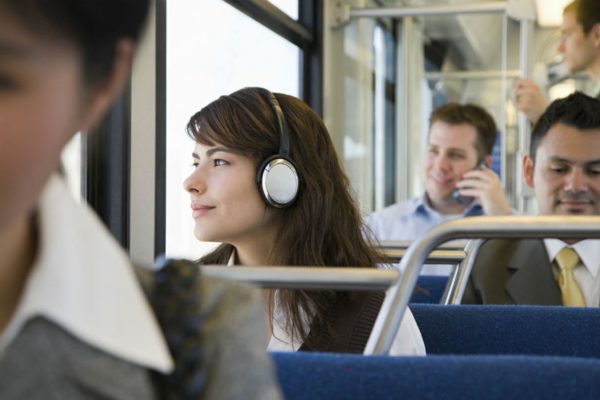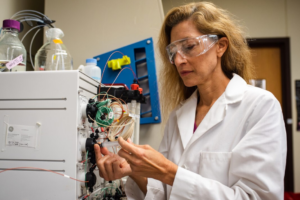The benefits of public transit are well known. Public transit improves air quality, creating a more sustainable environment. It helps connect people to jobs, stimulating the local economy. And it encourages more physical activity, promoting public health.
But these benefits don’t matter if public transit is inaccessible.
For many Americans, public transit isn’t an option. Routes may not reach them, buses might not show up, or wait times are too long. Residents who live in areas with nonexistent or unreliable transit service are trapped in their neighborhoods, stranded in “transit deserts.” These are areas where the demand for transit is high, but the supply is low.
Knowing where transit deserts are located is important for improving a community’s well-being. People who depend on transit are usually poor and cannot afford to own a car. They tend to be people who are older and experience limited mobility or have disabilities that keep them from driving.
Unreliable transportation prevents people from these already vulnerable populations from finding and keeping jobs. Also, health issues may be ignored or exacerbated if people do not have reliable transportation to medical services.
This is a national issue, but it also hits close to home. Our research on transit deserts shows that transit-dependent people make up more than 20 percent of the population in all major cities in Texas, apart from Austin, which is about 15 percent. In Houston, that number is as high as 38 percent of the population. In Dallas, it’s 26 percent; in Fort Worth, it’s 22 percent. And in San Antonio, the seventh-largest U.S. city by population, nearly a quarter of the population is dependent on public transit.
Improving transit access matters for car owners too. City officials in Houston, Austin, Dallas and other Texas cities are worried that increased traffic congestion is going to cause jobs to leave the state. And research shows that simply widening highways won’t be enough to solve our traffic woes. As funding from federal and state transportation user fees declines, local governments need new ways of targeting transportation investments.
Some cities are starting to make headway, but more is needed. For instance, Houston’s transit authority, METRO, recently redesigned its bus service as part of a larger “Transit Service Reimagining” campaign. In Dallas, the City Council and the Dallas Area Rapid Transit board are debating the merits of a bus service overhaul versus funding a major rail expansion. In San Antonio, VIA Metropolitan Transit is also evaluating a potential redesign of its bus services.
But we can’t begin to fix the problem if we don’t know where it exists. Overhaul of bus services requires knowing where people need improved transit access the most. Although planners and policymakers have a rough idea of where transit supply is low, limited resources mean that solutions must be specific and targeted to the areas with the greatest need. For example, although Houston’s bus ridership numbers have risen since a recent service overhaul, evaluation of the new transit services shows that gaps still exist.
Research we have done has shown that maps and Geographic Information System technology are the most promising tools for identifying these transit deserts and modifying services. Unlike previous, more complicated network modeling, GIS methods can quantify and measure both transit supply and demand, which can quickly be applied to any location. Transit desert neighborhoods exist in every city, and if we don’t address it now, the situation will only get worse as our population continues to grow.
Continued research on transit deserts will develop more precise methods for identifying gaps in transit coverage and provide increased access for everyone. By improving transit services in the areas that need them most, we are ensuring that our cities, our state and our nation will grow and thrive in the decades to come.
Junfeng Jiao is an assistant professor and the director of the School of Architecture’s Urban Information Lab at The University of Texas at Austin.
A version of this op-ed appeared in the Fort Worth Star Telegram, Houston Chronicle, and the Austin American Statesman.
To view more op-eds from Texas Perspectives, click here.
Like us on Facebook.




